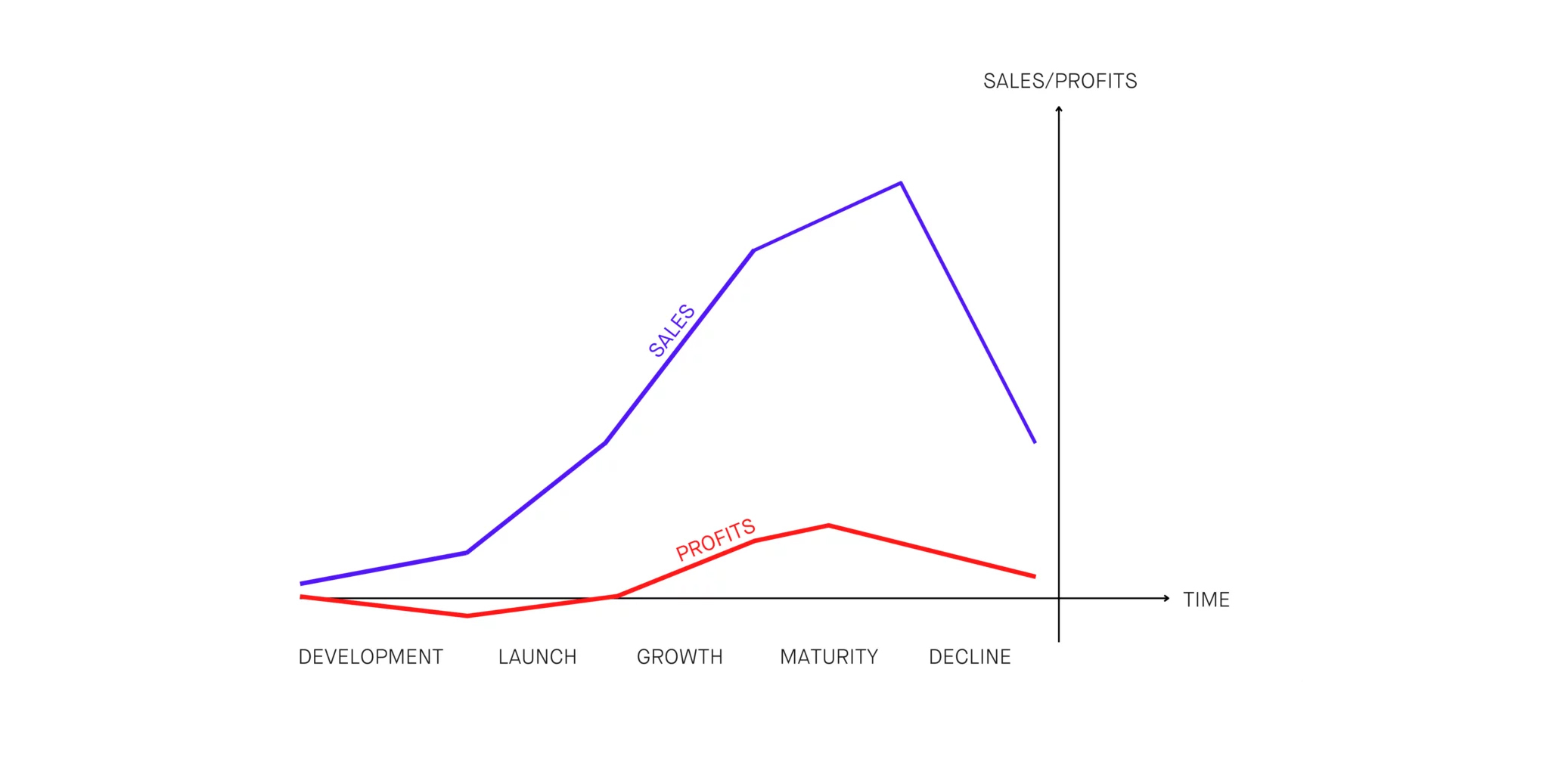Amazon Product Life Cycle
Why is this important?
Selling on Amazon means doing a significant amount of research to learn about the market, demand, and competition for any products you are interested in selling. This is especially important for brands developing their own products because the research will show whether it is worth investing time and money.
However, if you stop there, you could be missing out on major opportunities. Understanding your product, its life cycle and the possibility of when it could “die”, will help you position it optimally. You will be able to offer appropriate customer service, set better prices for your products and make better marketing decisions and, as a result, benefit from selling in-demand products.
What is the Amazon product life cycle?
The product life cycle is the series of stages of a product from its ideation up through its withdrawal from the market. Amazon sellers can use this product life cycle as a guide when creating their product listings to make sure they meet customer expectations. The cycle consists of five stages: Development, Launch, Growth, Maturity, and Decline.
- Development: The development stage is the pre-phase of the product life cycle. During this stage, sellers ideate and develop the product, but it is not available for sale on Amazon yet.
- Launch: At this stage, the product is still not available for purchase by customers, and in order to successfully launch, sellers must create a listing for their product on Amazon. The listing must contain the product name, description, images, price and shipping details. Once the product is listed on Amazon, sellers must promote it through various marketing strategies.
- Growth: During the growth phase the goal is to increase sales and take advantage of advertising opportunities. As sales continue to grow, sellers seek to source new inventory.
- Maturity: The product enters into the maturity phase once it has been on the market for a considerable time and reaches the level of steady sales. It is worth noting that most products placed on Amazon reach this stage.
- Decline: This stage occurs when a product loses its popularity, and therefore, sales and profit start to decline. Some sellers decide to withdraw the product from the market, while others try to repurpose it.

Why does Amazon have a product life cycle?
There are several reasons why Amazon has a product life cycle. For example, it is important for the marketplace to make sure that sellers meet customer expectations. That’s why sellers must upload product images and specify details such as the delivery date so the customer knows when to expect their product.
The product life cycle also helps Amazon identify and eliminate some of the unscrupulous sellers making it harder to cheat the system and ensure that customers are protected from fraud.
Adhering to the product life cycle not only helps to keep the entire shopping site looking uniform but is also beneficial for sellers, as it helps them maintain proper inventory levels.
Product life cycle management (PLM)
In most cases, you can easily determine what stage of the life cycle your product is in. However, different types of products go through their life cycle at different rates. Some products, such as fashion, may be tied to a single season. Others, like smartphones and other consumer electronics, are mostly sold only until the next model comes out, as well as their accessories.
Understanding what stage of the life cycle your product is in will help you make decisions that will benefit your business. You’ll be able to properly manage your next steps to increase sales, reduce costs, and better manage inventory and investments.
PLM: Pricing
Your pricing is directly affected by the life cycle stage of your product.
In the launch phase, sellers must price their products to sell to an audience that is not familiar with them yet. That is, you have to constantly build up the demand for your product not only with help of marketing but also pricing.
In the growth stage, the price can be defined based on demand and quality. As demand grows, consumers get a bit pickier and begin to look for different types of products in a given niche based on their personal buying preferences. The most important aspect of pricing in the maturity stage is that the product remains competitively priced within its category.
In the decline stage, however, pricing depends on the demand and the competition. When there is little demand, the price should obviously remain low to ensure sell-through. Otherwise, a high price can lead to your share being taken by competitors with a lower one.
PLM: Stock
Maintaining an overview of your products’ life cycles also allows you to take inventory management measures to best meet demand and avoid over- or understocking. This is especially important at the beginning and the end of the life cycle.
In the launch phase, most products can be oriented towards other products within the category. Analyzing the life cycle of similar products can help you predict future demand fairly easily. Products remain in the growth phase as long as they continue to be in high demand and remain popular. Following the life cycle can offer you some security while investing in large amounts of inventory to meet growing demand and be certain that it will help cut costs.
In the maturity stage, inventory management should focus on meeting steady demand and balancing ordering and storage costs. In the decline stage, however, inventory should gradually decrease to account for the inevitable decrease in orders. It is also smart to significantly reduce supply at this stage to avoid taking risks.
PLM: Marketing
In addition to all of the above, the product life cycle also affects demand, customer perception and availability, and therefore your marketing strategy as well. There are several marketing tactics you can use to extend the product life cycle, create new niches and differentiate yourself from the competition.
For example, the launch phase is the time to convince consumers that your product has value. Promotion of the product at this stage should be based on the value it brings to the consumer.
In the growth phase, offering the customer a quality solution that meets or exceeds their expectations is an important step to push the product to the top of its category. Therefore, advertising should focus on displaying the quality and reliability of the product itself, as well as the brand that produces it.
Differentiating the product or seller from the competition through price, quality, packaging, etc. is what will help you stand out in the maturity stage. Various discounts and coupons will stimulate your sales, and innovations such as eco-friendly packaging or a product in a new colour or material will help to attract a new audience and excite the existing one.
In the decline stage, it is worth considering the launch of new product versions or moving into new product categories that could extend the life cycle of your product or even bring it back to the beginning.
Marketing tactics should change according to the point in the life cycle, because the one that works well for a product in the growth stage may not help it in other stages. If a marketing tactic no longer works for a product, it means that it is outdated, prompting the need to explore new marketing methods as the product progresses through its life.
Insights
View all insightsQuestions?
Principal Amazon Retail at DEPT®





